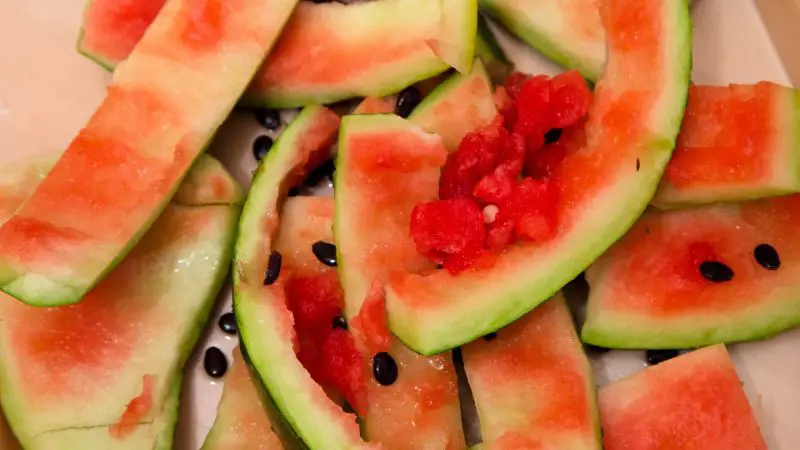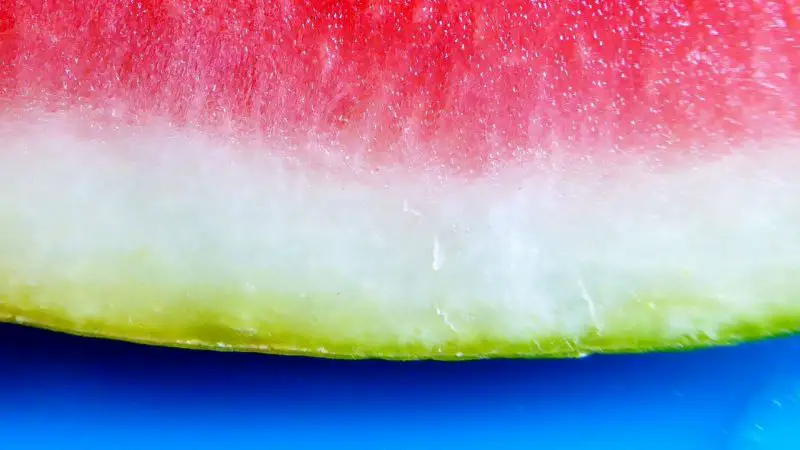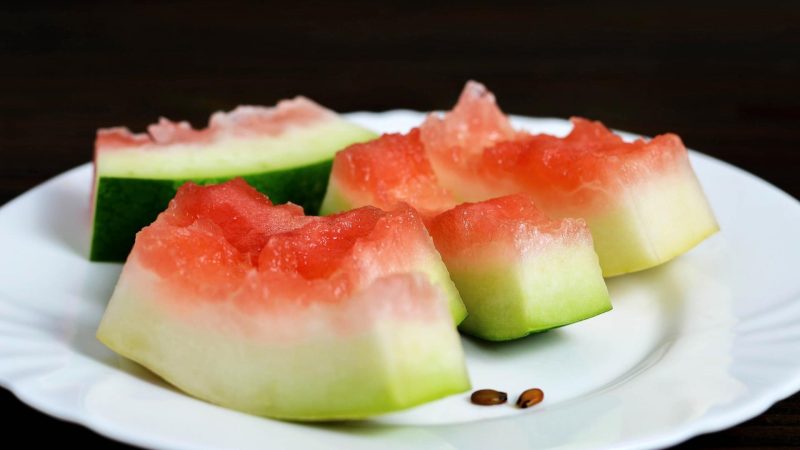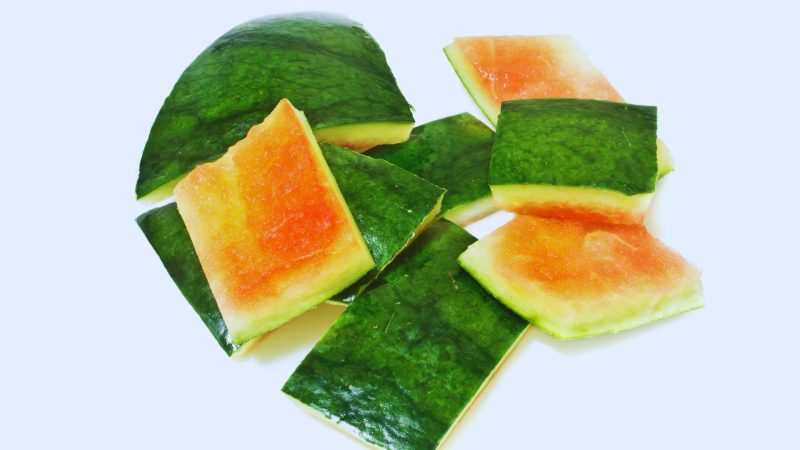Summer has already started and we are all excited because we can’t wait for the juicy, refreshing watermelons. When you cut the huge watermelon, you just eat the seedless pink center and throw away the whole rind part. However, it is nutritious and edible, so maybe it could be a refreshing treat for our guinea pigs? Well, let’s find out.
Can guinea pigs eat watermelon rind? Guinea pigs can eat watermelon rind. In fact, the rind part of the watermelon is much better for the guinea pig because it has less sugar than the actual flesh part. It is best to give the guinea pigs watermelon rinds a few times per week, 2-3 times tops.
You may have thought that the pink fleshy part contains the most nutrients but the watermelon rind has even more nutrients than the fleshy part. Watermelon rind is much better for the guinea pigs. They will get enough health benefits and they won’t ingest too much sugar.
If you want to learn more about watermelon rind as food for the guinea pigs, please read the following sections about the benefits, risks, nutrition facts of a watermelon rind for the guinea pigs.
Table of Content
Is Watermelon Rind Safe for Guinea Pigs? | Health Benefits

Some of the benefits that a watermelon rind gives to guinea pigs include the following:
- Scurvy prevention – The guinea pigs always need vitamin C in order to survive and fight off the fatal disease called scurvy. These are the scurvy symptoms: diarrhea, fatigue, rough coat, no appetite, discharge, and bleedings. They are prone to scurvy only when they lack vitamin C in their diets. They lack vitamin C because they can’t make it naturally and they also can’t store it. So, give them vitamin C foods whenever you can.
- Antioxidants – The watermelon rind has vitamin A and lycopene. Both are strong antioxidants that can improve overall health and boost their overall immunity. When the organism of the guinea pigs receives antioxidants, they can remove the free radical damage that causes them most of the health problems.
- Prevention from digestion problems – The watermelon rind has zinc and betaine, and they are very important for the gut health among other things. Sometimes guinea pigs can have indigestion, cramps or diarrhea. The zinc can treat diarrhea, and the betaine can improve the digestion process overall.
- Prevention from kidney stones – The potassium contained in the watermelon rind can help with the prevention of kidney stones formations.
- Healthy blood – The watermelon rind also contains some iron. The iron keeps the blood in perfect health. It fights anemia and it removes weakness.
Nutrition Facts of Watermelon Rind

The watermelon rind has the following nutrients:
- Vitamin C – It is the most important nutrient that guinea pigs can receive. Without this vitamin, they get the disease called scurvy. Also, guinea pigs can’t produce this vitamin naturally. Even when they receive it, they can’t store it. Basically, without this nutrient guinea pigs can’t survive, and the watermelon rind has it.
- Vitamin A – This vitamin has a positive impact on the health of the brain, skin, heart, lungs, kidneys, and vision. It also strengthens the immunity.
- Vitamin B6 – The B6 vitamin helps with relaxation, better sleep, and creates a happier mood. This vitamin can improve the quality of sleep, reduce stress, and boost serotonin production (the hormone of happiness).
- Zinc – The zinc treats diarrhea, boosts the overall immunity, and also prevents against chronic diseases.
- Potassium – With potassium, there is less risk of high blood pressure.
- Citrulline – This is an amino acid that contributes to the health of the blood vessels and the heart. It improves the blood flow too, and it can boost the immunity as well.
- Lycopene – It is an antioxidant that can reduce the risk of certain cancers. Also, it has been proven that lycopene improves the health of the heart.
- Flavonoids – The flavonoids are pigments in the plants. They can reduce the risk of cancers, heart diseases, strokes, and protect the health of the brain.
- Riboflavin – Also known as the B2 vitamin. The B2 improves the oxygen flow in the body. It breaks down the consumed food and converts it into energy.
- Iron – It is a mineral that is crucial for the health of the blood, and with that said, the overall health too. When the blood is healthy and strong, the whole organism is less prone to any health problems. Iron is found in every cell, but mostly in the red blood cells. It removes fatigue, weakness, and it prevents anemia and boosts the overall immunity.
- Calcium – This mineral forms strong bones. But in excess, it can harm the urinary tract of the guinea pigs. Luckily, watermelon rind has just small amounts of it.
Are Watermelon Rind Bad for Guinea Pigs? | Possible Risks

Even though watermelon rind is beneficial to guinea pigs, it can still possess risks. The following are some of its risks:
Urinary Tract Complications
Most fresh produce foods contain calcium, and the rind has some calcium traces too. This mineral, in excess, can damage the urinary tracts of the cavies. But luckily, the watermelon rind doesn’t have much of it.
Watermelon rind should be given to guinea pigs just a few times per week. If given in excess, calcium can cause blood in urine, pain during urination, bladder and kidney stones, and urinary infections.
Possible Ingestion of Pesticides/Insecticides
If the outer layer isn’t washed well (with several rinses under the water), there is a risk that the guinea pig can ingest some chemicals. Nowadays, every veggie and fruit is sprayed with insecticides and pesticides, so you must wash the green skin of the watermelon as much as you can.
Indigestion
In case you leave a bit more of the fleshy part on the white rind, and the guinea pig could ingest too much sugar, it will result in indigestion. The pink fleshy part of the watermelon is very sweet and sugary, and the cavies can’t digest excess sugars very well.
After consuming sweet foods, they will get cramps, flatulence, gasses, pains, and loose stool. So, make sure to leave just a little bit of the fleshy part, not too much, and slice the rind thinly to make it easier for them to chew.
More Information About Watermelon Rinds and Guinea Pigs
What Is the Serving Size and Frequency of Watermelon Rind for Guinea Pig?
It is best to give the guinea pigs watermelon rinds a few times per week, 2-3 times tops. You want to avoid feeding them watermelon rind daily because they must have a rich variety of foods in their diet.
It is obligatory for guinea pigs to consume certain fruits, veggies, and pellets daily, but the watermelon rind can be given 2-3 times weekly. The serving size is half a cup of watermelon rinds or take half of one rind and feed it to your guinea pig.
How to Prepare Watermelon Rind for Your Guinea Pigs?

The outer layer of the watermelon must be washed with water, rinsed a few times. When you slice up the watermelon and its pink fleshy part, get ready to slice up the rind. It is best to make a thin, inch-size slice. Check for any seeds because maybe you have missed some, just in case. Finally, you are ready to serve it to your cute furry guinea pig friend.
Can Guinea Pigs Rind With the Green Skin Part?
The guinea pigs love the green part of the watermelon rind. You don’t need to be a carving master in order to feed them the rind. It is enough to wash the watermelon rind part. Make sure that there aren’t seeds anywhere, and also create thin slices with the green part.
Quick Facts on Watermelon Rind
The following fast facts about watermelon rind will amaze you:
- Watermelon is called this way because it is 92% water.
- Watermelons come in almost 1200 varieties.
- There are seedless watermelons, and they are natural (not GMO).
- In Japan, watermelons can be grown in the shape of a cube.
- Also, in Japan and China, the watermelon is a perfect gift to bring when you greet a host.
With food, you should be careful what to choose. If you are not sure what to feed them but believe your little piggies deserve some great treats, check our Helpful Guide to the Best Guinea Pig Treats to get some ideas.
We have also made a full list of foods that guinea pigs can and can’t eat (150+ Types of Foods). Be sure to also check our recommended products page for everything you will ever need to assure a happy life for your guinea pigs. Hope this information was helpful and you have found the answer you were looking for.
List of Sources
The Effects of Diet on Anatomy, Physiology and Health in the Guinea Pig
Diet Composition and Mineral Balance in Guinea Pigs
Some Determinants of Intake and Patterns of Feeding in the Guinea Pig
